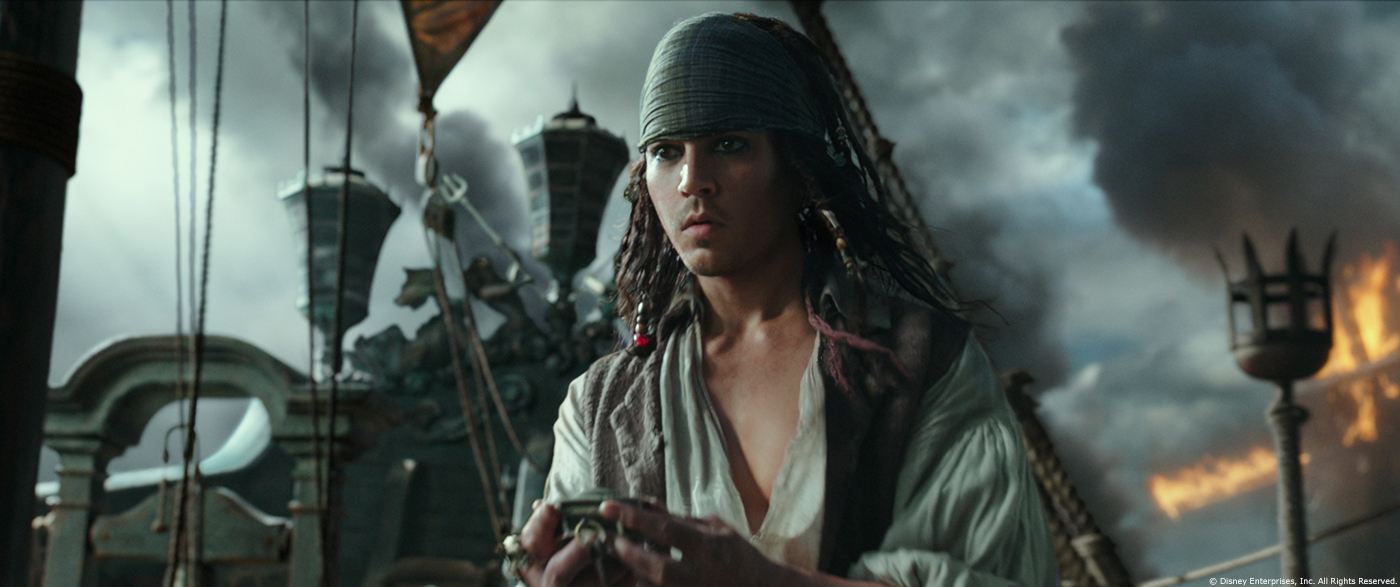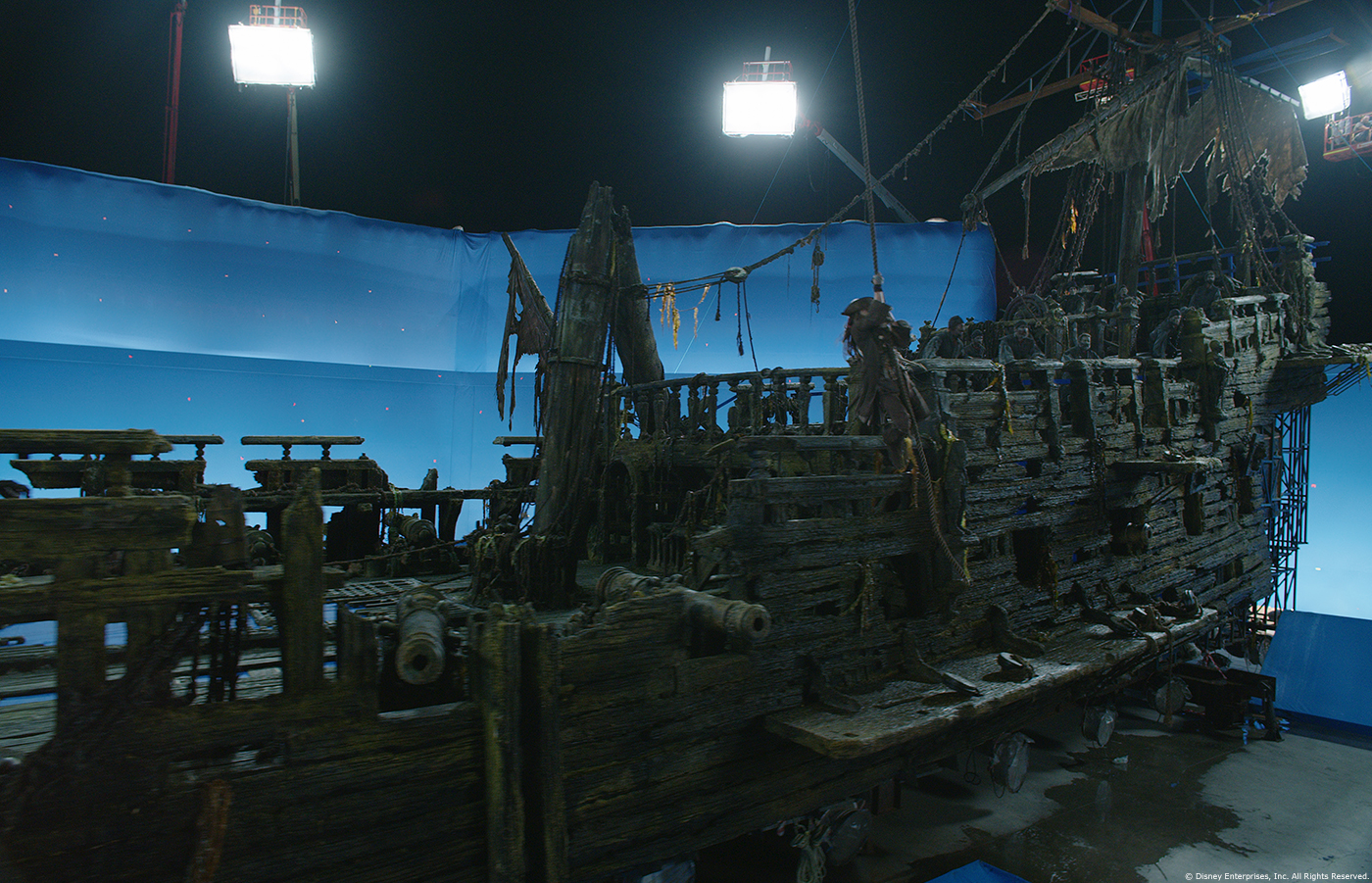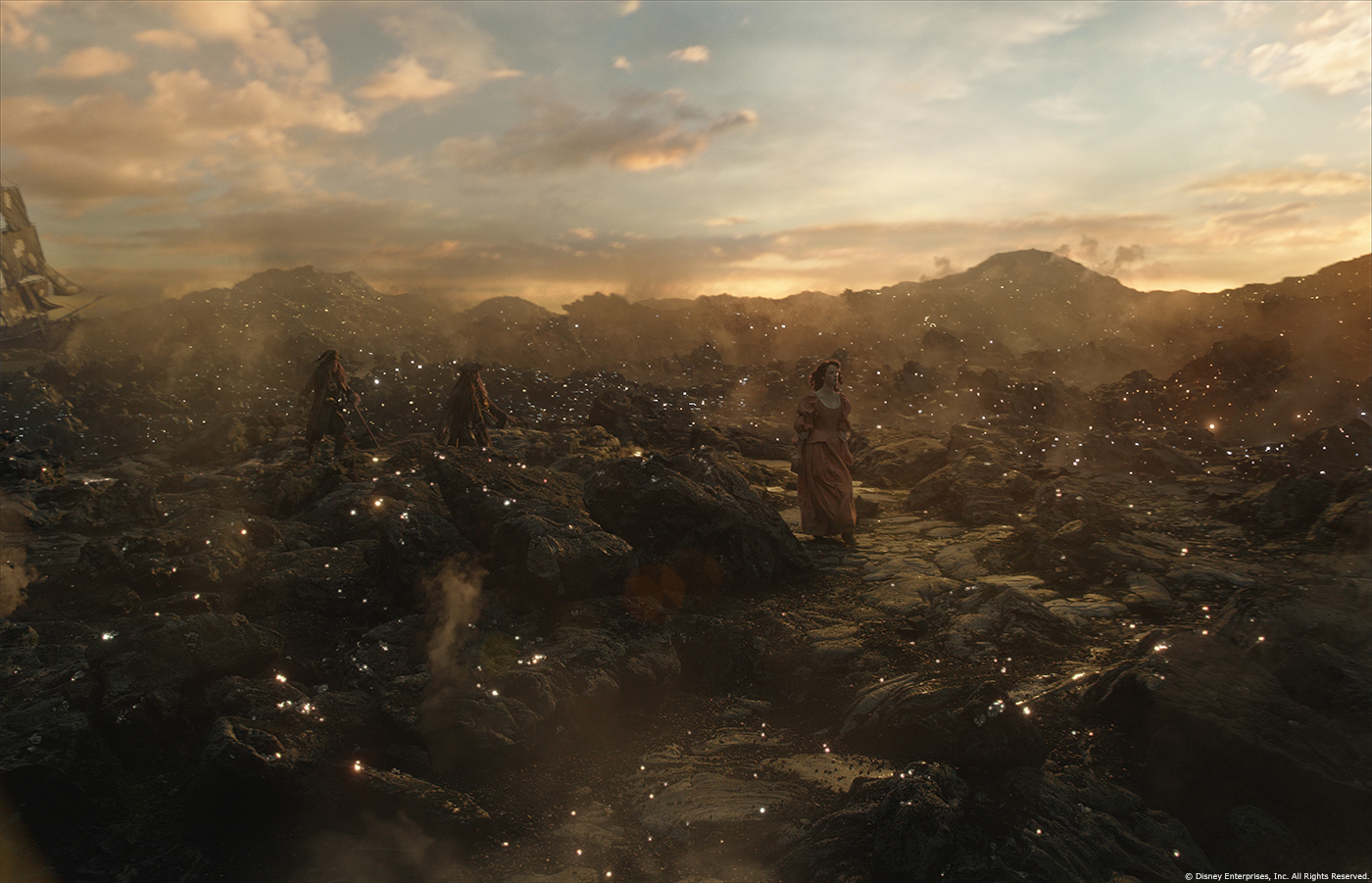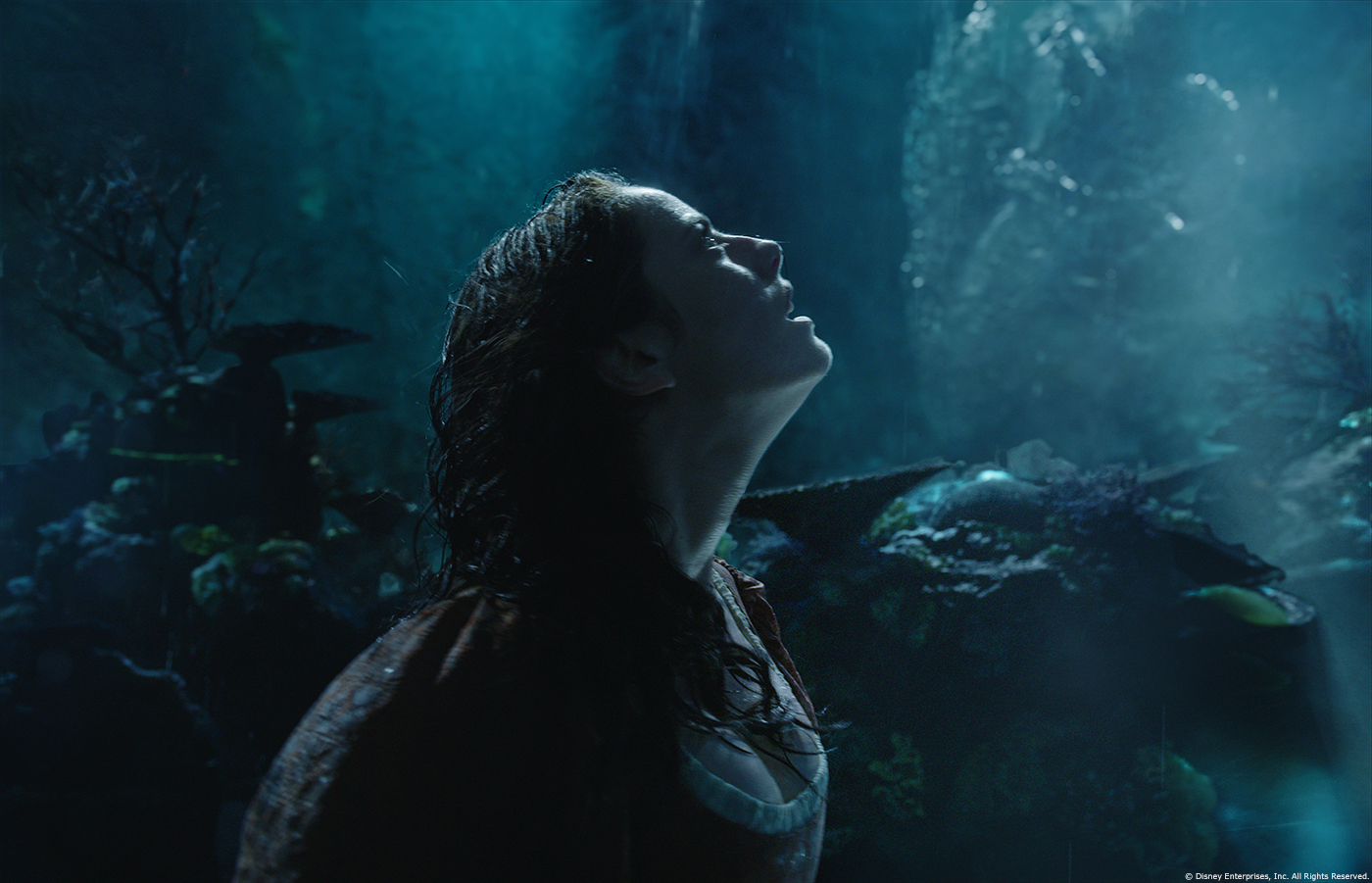In 2012, Gary Brozenich explained to us about the work of MPC on WRATH OF THE TITANS. He then took care of the visual effects on THE LONE RANGER, EDGE OF TOMORROW and TERMINATOR GENISYS. Now he is back into the world of PIRATES OF THE CARIBBEAN.
How did you and MPC get involved on this show?
Myself and MPC were involved from the earliest days of the film. There was an initial stage of discussions and the the film took a hiatus. As soon as it picked back up we were back on board. I had some initial discussions with J&E and we hit it off from there.
How was this collaboration with directors Joachim Rønning and Espen Sandberg?
J&E were very open to what we as the VFX department could bring to the table.They had plenty of experience from previous films and commercials to understand what was possible, but when you have a show as broad in its requirements and possibilities as Pirates is, it’s all hands to the decks.
What was their approaches and expectations about the visual effects?
Because of the significant overlap between practical builds, costumes and SFX we had a lot of collaborative meetings with the other HOD’s in advance of full methodology planning. Especially with Nigel Phelps the Production Designer and myself in regard to the look of so many aspects of the film. Ghosts, birds, ships, imagined landscapes. Nigel laid out a comprehensive vision for this world and we would negotiate where the line was when it would become more of a VFX concern to pick up from there. For SFX Dan Oliver the SFX Supervisor and I would also find that line of what was built, what rigs they would create and what handover point there was to VFX.
What was your feeling to be back in the Pirates of the Caribbean universe?
I love the Pirates Universe. For me it is the best combination of fantasy and dirty reality. There are things that simply could not be in the real world that feel right at home there. In DEAD MEN TELL NO TALES I feel like we stretched that out to another notch and pushed the fantastical environments and ideas further than before. Which was great fun for myself and the artists to dig into.
How did you organize the work with VFX Producer Tamara Watts Kent?
Tamara and I were great collaborators. She has a wealth of experience on high end productions and especially ones with Disney which was hugely valuable. She made sure that the directors and all of the filmmakers could have what they felt they needed and I made sure that they got it.
How did you split the work amongst these vendors?
The breakdown of the work on the film was quite difficult as there was significant overlap of assets across the sequences and the film as a whole. We tried to find ways to separate it without too much of a requirement to duplicate work in various houses, but quickly hit a wall. It became clear that we needed a primary vendor for the lion share of the hardcore work of the significant CG water usage, large scale digital sets and Salazar, his crew and all of the CG ships. That was MPC.
The other smaller sequences still had significant demands but were more contained and could be taken to more niche facilities. Atomic Fiction picked up most of the larger CG work outside of the MPC work with all of the Bank Heist digi doubles, city extensions and enhancements as well as the much sited guillotine sequence where Jack Sparrow is tied to a spinning death contraption. They also created full digital island extensions and shipyards that were shot in difficult conditions surrounded by hotels, modern harbors and bad weather!
Rodeo FX came in and recreated a large number of nighttime sea faring environments and one off specialist FX moments like the blood red moon appearances and the destruction of the bank interiors.
And Lola did what they do best with the youthefication of Young Jack Sparrow and a multitude of fixes.
In addition we used Cosa VFX in LA to do additional clean up and some smaller matte work. We also ran an in house team for a portion of the film for post vis work and some clean up as well.
Can you tell us more about your collaboration with their VFX supervisors?
All of the Supervisors Jim Gibbs at Atomic, Martin Lipman at Rodeo, Trent Klaus at Lola and Sheldon Stopsack and Patrick Ledda at MPC brought their A game and relentlessly pursued the results for us. We felt very lucky to have them all on board.
The vendors are all around the world. How did you proceed to follow their work?
I didn’t sleep as much as I would have liked! Almost all of the work was split between the UK and Montreal with the remaining houses as well as the production team, editorial and post were all in LA. I spent many months in all three locations throughout our post as it seemed most relevant and left time each evening to review work with team Disney and the directors or whichever location was waking up.
Can you tell us more about the previz process?
The previs was done by The Third Floor under the supervision of Nik Markel. It was great to work with him and the team with two directors that hadn’t really had access to this toolset on such a scale before. Once J&E got directly involved with the process they were hooked and saw the massive potential and impact it can have on a film with this scope. We focused on revising the major action beats and anything that needed visual explanation to the shooting crew. Needless to say this grew over time and we ended up revising some sequences end to end. There was never a slavish attachment to the previs whilst shooting as we had 2, 3 and 4 cameras on any shot at any one time. Typically one would be the nod to the previs, but once in the editors hands it was looked at fresh. At that point we handed over post vis to the MPC team and Alex Cannon their Supervisor. They worked very closely with Leigh Folsom-Boyd and Roger Barton the editors for most of the post period and helped to give meat to the bones of the plates that needed VFX explanation as well as any new CG beats that would be added later.
The first big sequence is a crazy bank robbery. How did you approach and create this sequence?
The Bank Heist was the first sequence to be prevised and a lot of the original spirit of that previs remained in the cut. Again as the Pirates universe is a mad combination of the fantastical and the real some ideas defy a simple explanation. Like a bank heist where they actually steal the bank itself and then have a chase sequence whilst trashing the town with it. Enter previs. The stunt team and SFX team then collaborated to build a drivable bank building that we actually drove around the town. It was not something you see every day. We helped the effect by bridging the gap where it contacts the ground, enhancing impacts and on the more dangerous portions adding a digital Jack Sparrow. We also had some shots where we shot a static bank and added drone plates of the towns to create BG comps assisted by significant reworking and 2DMP projection work by Atomic Fiction. In addition the driving bank building had a massive widescreen that was most of the front facing side. This was helped by a clever suggestion from Dave Taritero where we printed a wood pattern to match the bank design as they do on the side windows of cabs and buses. It allowed the stunt driver full visibility whilst blending with the real facades.
Can you tell us more about the beautiful slow-mo shot that ends this sequence?
The slo mo shot was the first shot we revised and one of the last we finished. Joachim had it in mind before we even started the production! It was shot in two parts on location with two digital double takeovers and two separate face replacements. The set recreation digital handoffs and all the explosions were done with AF. They had to manhandle together the two plates for the jump off the building and the landing on the bank vault that were shot on two separate days. Both plates have the stunt double in as Jack Sparrow. The face replacements were done by Lola with Jonny sitting in their rig in Los Angeles creating his facial performance for the action.These face replacements were then handed back to AF to apply to the final shot. In the center portion of the shot there is a fully digital Jack that blends between the two plates of the stunt performer. The vast majority of the environment is recreated through plate projections and CG replacing to allow for a seamless blend. The description of it here does not do justice to the complexities and efforts that AF took on and delivered for the shot that was a special moment for the filmmakers, but i hope that gives a map to the process.
The bad guy is Captain Salazar. Can you explain in detail about its design and creation?
Salazar’s design was more of an evolutionary process as the look and feel for the world he was to inhabit took shape and what Javier’s desires were for how to play his role. Initially he was much more intact and grand in his presence but as the character unfolded with the directors and Javier he became more battered and fragmented, brutalized and affected by his environment and predicament. The look and feel of the ship was very much like the Mary Rose that was brought to the surface in the UK. Its an amazingly well preserved Napoleonic ship that bears all the ravages of the time it spent on the bottom of the sea. I guess that was where Salazar and his crew came from as well. We worked very closely with Nigel to get the balance of materials to make him and his crew a cohesive group. They all have the story of their death displayed through their outward appearance.
A big thanks for your time.
// WANT TO KNOW MORE?
MPC: Dedicated page about THE MUMMY on MPC website.
// BEFORE & AFTER PICTURES – MPC
© Vincent Frei – The Art of VFX – 2017



























